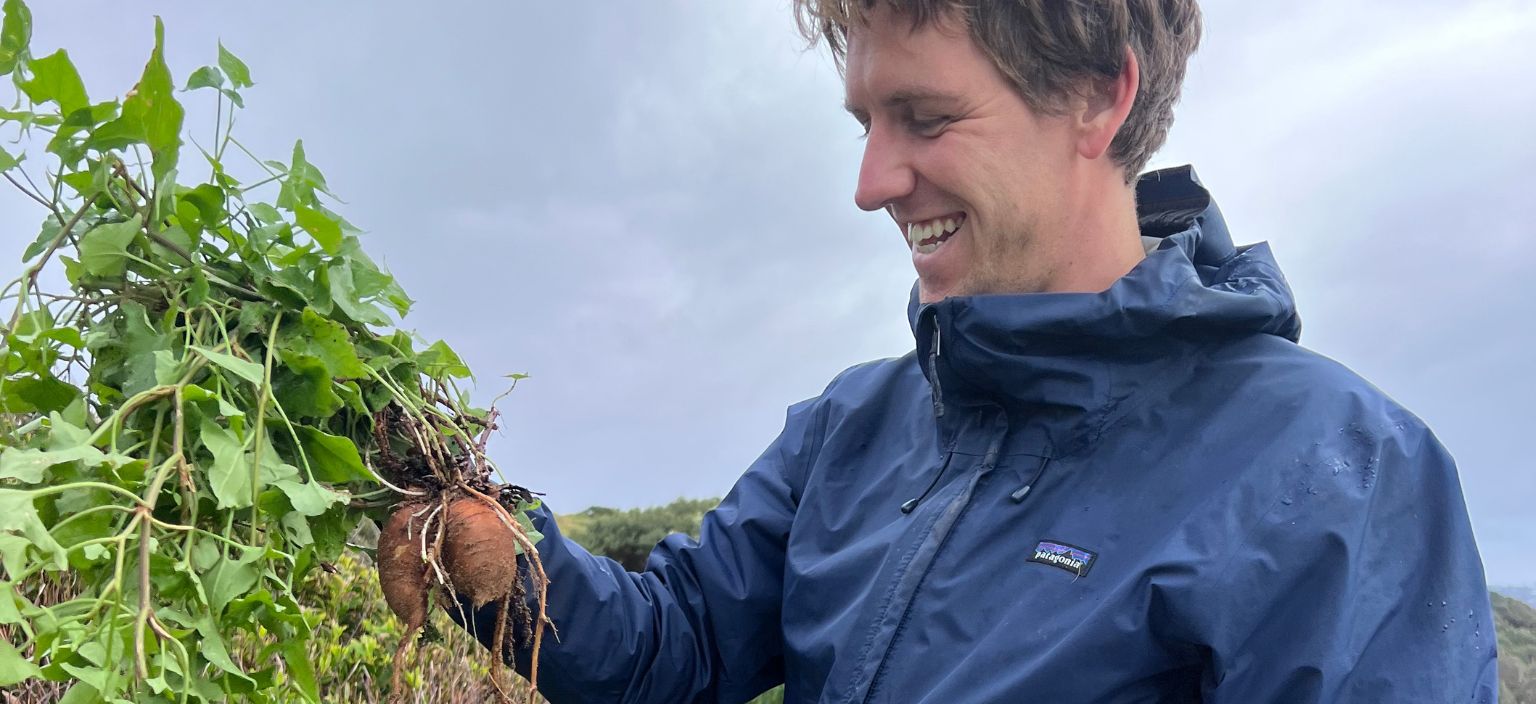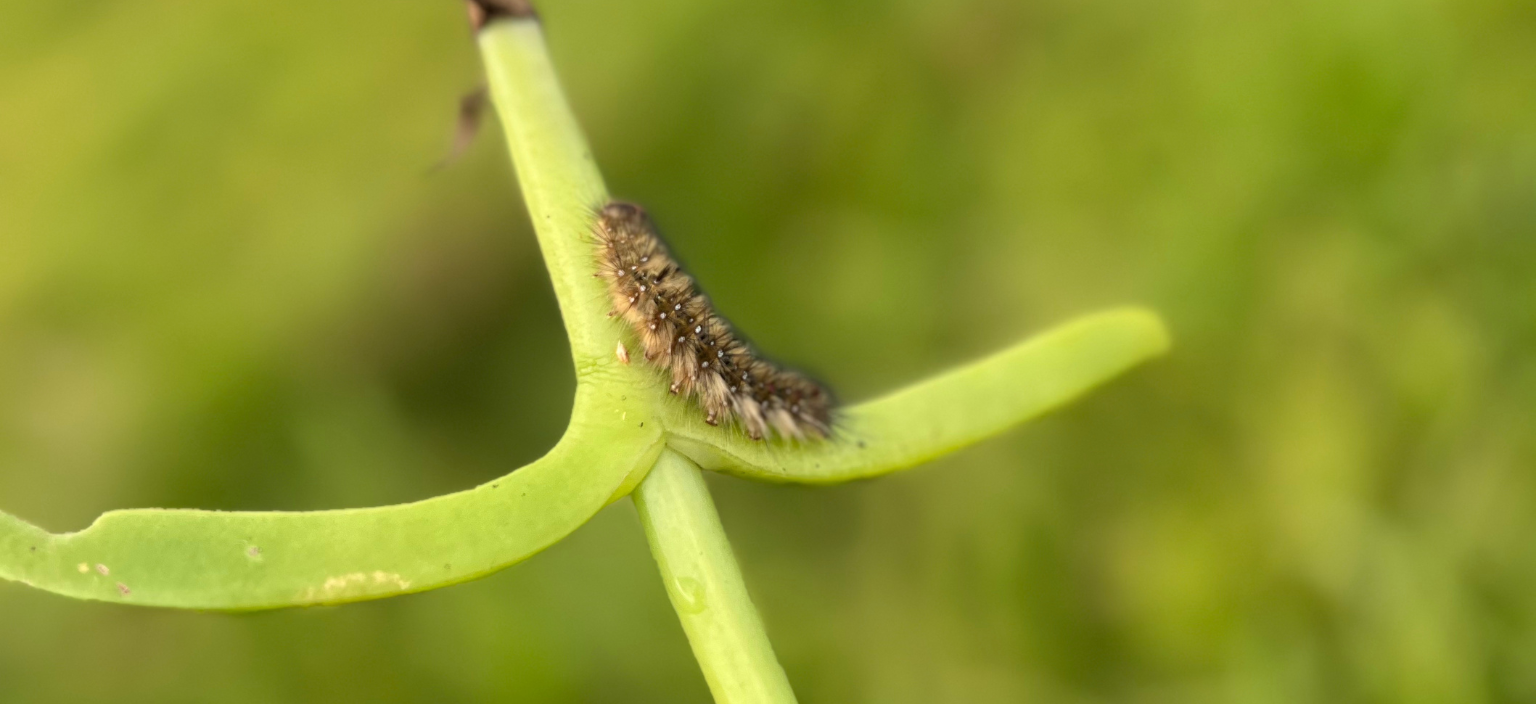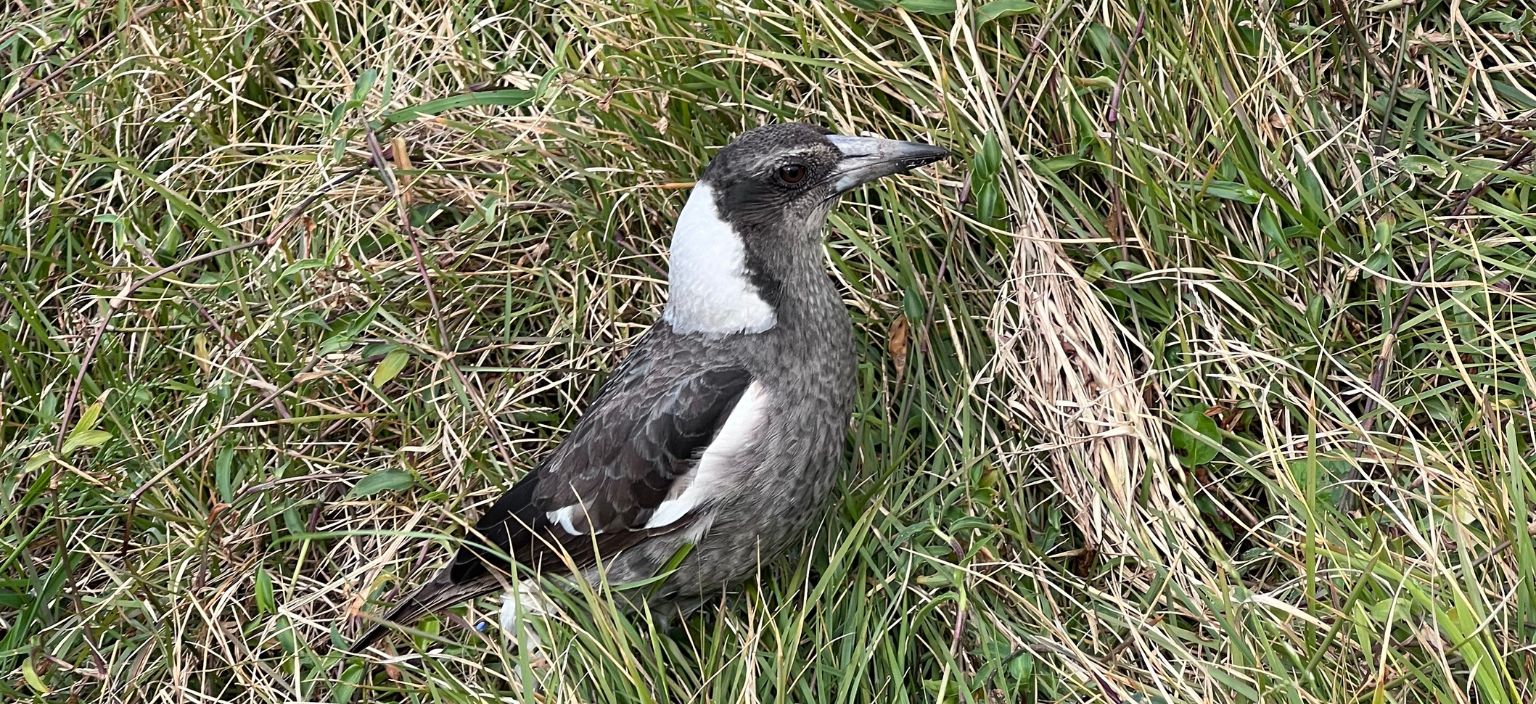When the five of us arrived on site at the western slope with 20 plants and a goal to remove more of the non-native pigs face we were serenaded by a delightful singing juvenile magpie who seemed to enjoy having us all around her, there were 3 or 4 other juveniles around which was nice to see, knowing that magpies[1] on the whole are in a significant decline of numbers on the east coast.
Then we got to work with Des going in to remove quite a patch of Bidens Pilosa which we didn’t know was in this spot and then further east he found Turkey Rhubarb – these weeds (Bidens and Turkey R) having only turned up in our site a few years ago with the Turkey rhubarb quite widely distributed – the seeds are probably blowing in from the back of Long Reef dunes, just south of our site, as that area is a real mess now – it was really good with just natives about 15 years ago, but since Reefcare have stopped moving around Long Reef and just concentrating on the headland, other areas have just ‘gone to seed’ such ashame.
Denise found a hairy caterpillar with some lovely colours (captured on camera) and then Lisa found one of the puff ball fungi, which Denise, Alex and Kathy had not seen before; so Lisa gave a squeeze so the dust-like spores spurted out, of which Denise filmed a video which you can view with this report. Meanwhile, Julie was up the top of our site, once again removing more Asparagus Fern. Lisa has asked NBC to ask their contractor if they can focus on this for awhile so we have the two teams working on the one weed, which should make a difference.
The crew continued to work westerly along the site pulling out the non-native pigs face, until Alex found a huge amount of Turkey Rhubarb in some Acacia which he then spent the rest of the morning digging in under these shrubs, The Rats of Tobruk would have been proud of him! It was a seriously good find as many of the plants were about to seed, so Lisa helped to collect the seeds whilst Alex went for the bulbs. We had some rain for about 10 minutes just after 10am, but we worked through that and the rest of the day was fine, except for a slight drizzle some time later for a minute of two later. We were surprised about the amount of grass under the pigs face which we removed, so there is no concern about erosion on this slope and we are hoping this grass is native couch. Further back where we started that area has an issue with Kikuyu – a problem for another day to which I have mentioned to Jock from NBC.
We had morning tea up on the slope which was lovely – to sit and see the view, but no whales that day unfortunately, but we did get a visit from a pretty light grey haired native rat, which came up to us, looked around for awhile and then hopped back up the slope. Denise thinks she got some of this native rate on video – hope so, that was a very special animal to see. Kathy contacted someone she knew about native marsupials and was advised they are around Long Reef, but considered rare. Lisa later found an area of digging/scratching under an Acacia (in the direction the rat headed off) when removing Pigs face, so this is probably near where the rat has it’s home. Lisa also found a live snail, so Denise took a couple of photos so we can send these off to Brad and see if it is the rare Maroubra snail or the Asian Trump Snail.
At the end of the day Alex got a worm and offered it to the juvenile magpie who flew across and was more than happy to take the worm off the trowel upon which is was offered – which then brought a couple of the other juvenile magpies to explore the recently disturbed ground for food. Magpies are certainly clever birds that should never be underestimated, apparently they can recognise people, so be kind to them.
On a sad note for the day, Julie picked up a tick. She reported to me it was “currently expiring under a blob of Lyclear. Thankfully overall, it was an absolutely fabulous day – and so worth working through that 10 mins of rain, with everyone finishing on such a high with all our wonderful wildlife encounters. Before Reefcare cleared this site of the invasive Bitou Bush there was no wildlife – and look now, so much to be found.
One of our volunteers, Denise has been for several months working hours and hours to update our Reefcare site and move it so a new platform. Once the move is complete, we can start to record our exciting finds at Long Reef on the new Web site platform.
[1] BirdLife Australia data shows that Australian magpies declined by 31 per cent in the East Coast region — including Sydney and Brisbane — between 1998 and 2013.




